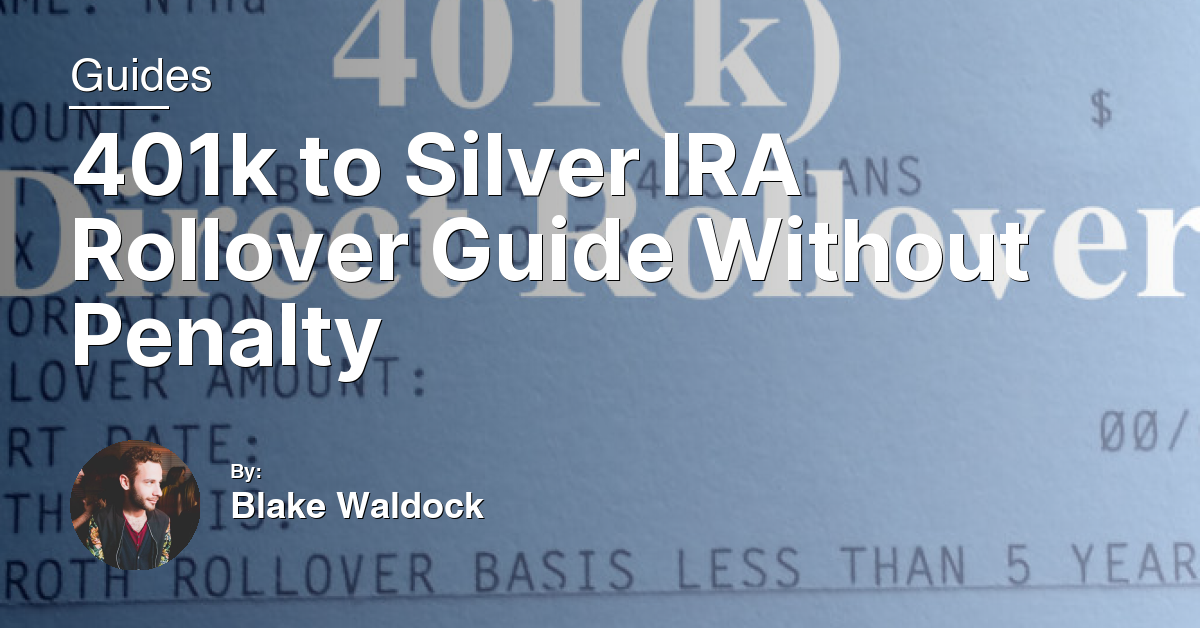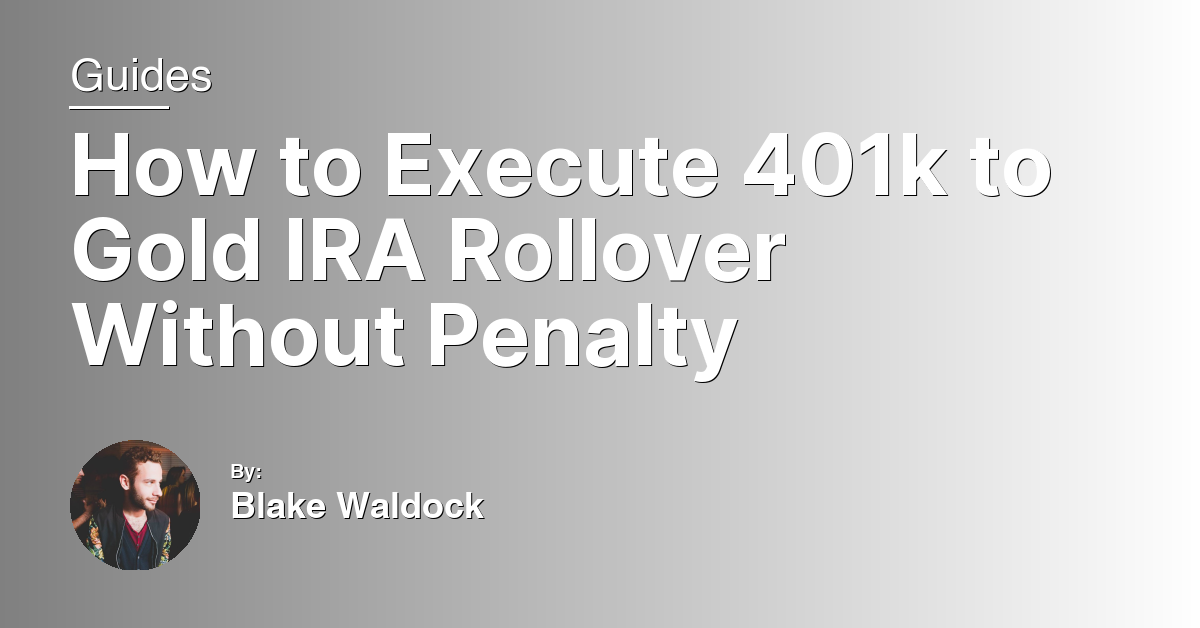In an evolving financial landscape, diversifying retirement investments is more crucial than ever. The 2024 Guide to Executing a 401K to Gold IRA Rollover Without Penalty offers a comprehensive roadmap for those looking to safeguard their future by integrating precious metals into their retirement planning. This guide breaks down the process step-by-step, ensuring a seamless transition from traditional retirement accounts to a Gold IRA without incurring penalties. Whether you’re a seasoned investor or new to the world of precious metals, this guide is your key to a more secure retirement portfolio.
Understanding Gold IRAs
Gold IRAs offer tax advantages similar to traditional IRAs, meaning you won’t face immediate income tax implications for your investments. However, it’s important to conduct due diligence to understand the fees involved, including setup, storage, and management fees, which can vary significantly between providers.
When executed correctly, a rollover from a 401(k) to a Gold IRA does not incur penalties or taxes, preserving your savings while shifting your investment strategy. Always consult a financial adviser to navigate the complexities of this process and ensure that it aligns with your overall investment goals and risk tolerance. This strategic move can enhance your portfolio’s resilience, especially in times of economic uncertainty, like the 2007–2008 financial crisis.
Direct vs. Indirect Gold IRA Rollovers
When executing a 401(k) to Gold IRA rollover, understanding the distinction between direct and indirect methods is crucial for a penalty-free transition. A direct rollover involves transferring your retirement savings directly from your 401(k) into a Gold IRA without the funds ever touching your hands. This method is preferred for its simplicity and for maintaining the tax-advantaged status of your investment, effectively avoiding any immediate income taxes or penalties.
On the other hand, an indirect rollover allows you to receive the funds from your 401(k), which you then have 60 days to deposit into your Gold IRA. While this method offers a short-term liquidity advantage, it comes with significant risk. If you fail to complete the transfer within 60 days, the amount becomes subject to income tax and potentially early withdrawal penalties, compromising the tax advantage of your retirement savings.
Both methods can support diversification and serve as a hedge against inflation by including precious metals like gold, silver, platinum, and palladium in your portfolio.
The Benefits of Investing in Gold
Investing in gold through a 401K to Gold IRA rollover provides a robust hedge against inflation and currency depreciation. As a precious metal, gold maintains its value over time, contrasting with the fluctuating value of paper assets in your portfolio. This makes gold a crucial asset for diversification, helping to spread risk and potentially stabilize returns, especially during financial downturns reminiscent of the 2007–2008 crisis.
Gold’s market liquidity means it can be sold quickly with minimal impact on its price, offering investors a reliable vehicle for wealth preservation. Moreover, as a tangible asset, gold is not subject to the same vulnerabilities as stocks or bonds, such as company depreciation or bond defaults.
Engaging with a financial adviser for due diligence can ensure a tax-advantaged transition from a traditional 401(k) to a Gold IRA, avoiding unnecessary fees or penalties. This action safeguards your pension, transforming it into a diversified portfolio inclusive of gold and possibly other precious metals like silver, palladium, and platinum, enhancing your investment’s overall resilience and growth potential.
Navigating Tax Rules for Gold IRAs
Navigating tax rules for Gold IRAs involves understanding their unique treatment under U.S. tax law. When executing a 401(k) to Gold IRA rollover, the process must be completed within 60 days to avoid penalties and income taxes. It’s essential to opt for a direct rollover, where funds are transferred directly between financial institutions, to sidestep withholding taxes.
Gold IRAs allow for the inclusion of physical gold, among other precious metals, offering diversification and acting as a hedge against market volatility and inflation. However, the IRS mandates that the precious metals must meet specific fineness standards and be held by a qualified trustee or custodian.
Selecting a Custodian for Your Self-Directed IRA
Selecting the right custodian for your Self-Directed IRA is a crucial step in executing a 401K to Gold IRA rollover without incurring penalties. It’s important to choose a custodian experienced in precious metals and familiar with the nuances of tax advantage strategies and income tax implications in the United States. This ensures that your transition from a traditional or Roth 401(k) to a gold-backed IRA is seamless and compliant with IRS regulations.
Look for custodians who offer transparent fee structures to avoid any unexpected costs. The price of managing your account, including any storage fees for physical gold, should be clear from the outset. Custodians with a robust technology platform can provide easy access to your account details and transaction history, enhancing your ability to manage your portfolio effectively.
Considering the role of gold as a hedge against market volatility and currency depreciation, a custodian who understands diversification and the protective nature of precious metals within a retirement portfolio is invaluable. They should offer a wide array of investment options, from coins to bullion, ensuring liquidity and flexibility in your investment strategy.
Lastly, pay attention to customer reviews and the custodian’s track record, especially during financially tumultuous periods like the 2007–2008 financial crisis. This can offer insights into their reliability and performance under stress, safeguarding your wealth and retirement savings.
The Importance of Physical Gold & Silver in Retirement Planning
Including physical gold and silver in your retirement planning through a 401(k) to Gold IRA rollover offers a robust strategy for diversification. Unlike traditional financial assets such as bonds, mutual funds, or stocks, precious metals like gold and silver provide a hedge against market volatility and currency depreciation.
This diversification can protect your pension funds from inflation and economic downturns, ensuring a more stable and secure retirement income. Gold and silver have historically maintained their value over time, making them a reliable vehicle for preserving wealth.
Moreover, the liquidity of gold and silver allows for easier access to funds without the high fees or penalties often associated with other retirement vehicles. By incorporating physical gold and silver into your retirement portfolio, you benefit from both a safeguard against financial uncertainty and a potential source of income tax-efficient growth.
Key Considerations and Cautions for Self-Directed IRAs
When considering a 401(k) to Gold IRA rollover, diversification is crucial. Including precious metals like gold in your portfolio can serve as a hedge against inflation and currency fluctuations, ensuring a balanced investment approach.
Be mindful of market liquidity. While gold is a tangible asset that often retains value, its liquidity can vary compared to stocks or bonds. This could impact your ability to quickly convert holdings into cash without a significant loss.
Understand the fees involved. Self-Directed IRAs may come with higher fees for management, insurance, and storage of physical gold. Compare these costs to traditional IRA products to ensure they align with your financial goals.
Lastly, be aware of the rules surrounding rollovers and income tax implications. Incorrectly executing a rollover can lead to penalties. It’s advisable to consult with a financial advisor or tax specialist to navigate these complexities efficiently.
Enhancing Your Retirement Savings with Gold
Executing a 401(k) to Gold IRA rollover allows you to transfer a portion of your retirement funds into gold without incurring income tax penalties, provided you adhere to IRS guidelines. This transition should be done with attention to the types of gold investments allowed in an IRA, which include certain coins and bullion.
Keep in mind, while gold offers a robust hedge against inflation and currency fluctuations, it should complement other investments in your portfolio such as bonds, mutual funds, and stocks to ensure a balanced approach to retirement savings. Fees associated with gold IRAs, including storage and insurance, should also be considered to maximize the benefits of this investment vehicle.

